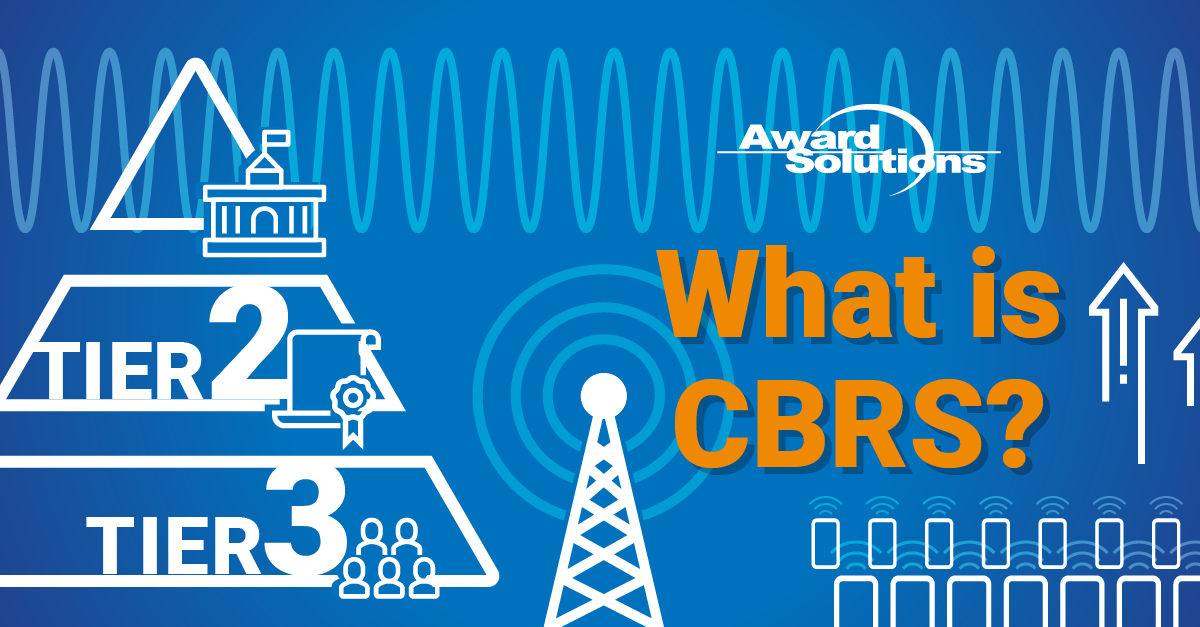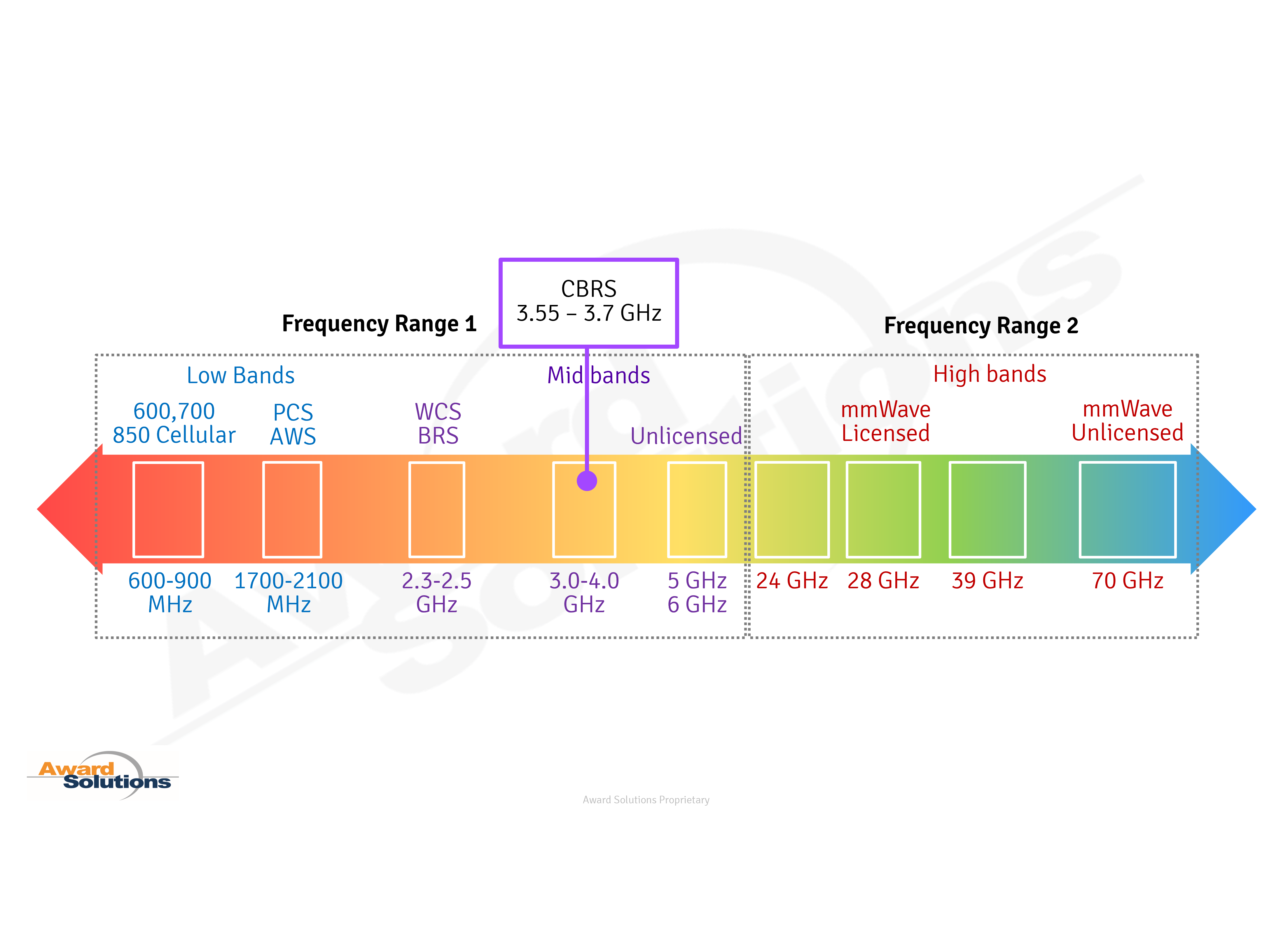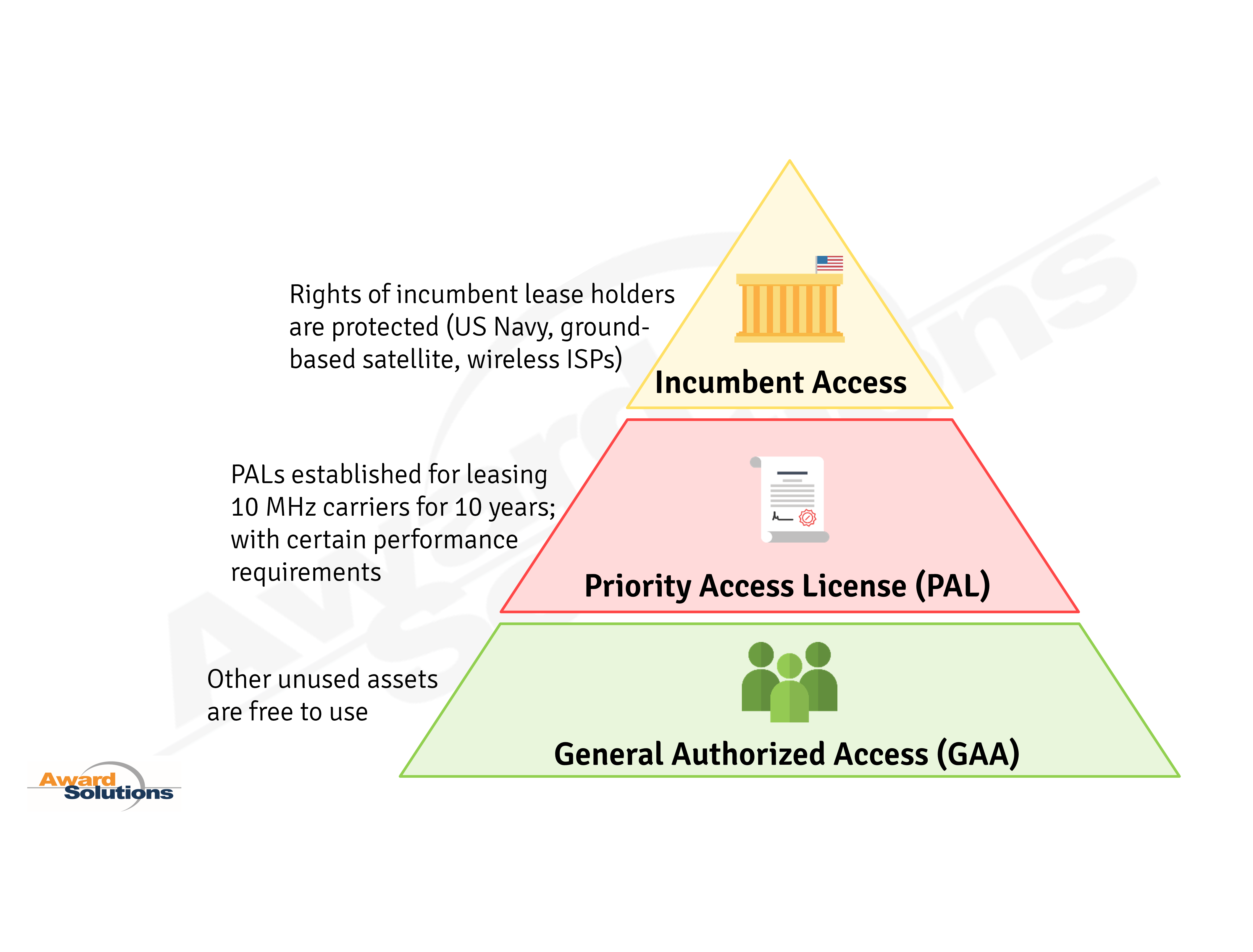
Citizen Broadband Radio System (CBRS) is the first spectrum in the 3 GHz range to be made available by the FCC for nationwide commercial wireless service. The CBRS band is 150 MHz wide, between 3550 and 3700 MHz. The CBRS band designation is Band 48. The image below shows the bands available in the U.S. and the location of the CBRS band.

After the successful full release of the CBRS band, two more frequency bands have become available in the 3 GHz range – one above and one below the CBRS band. The first band is C-Band from 3.7 to 3.98 GHz, and the second band is from 3.45 to 3.55 GHz. Within 18 months, the FCC has introduced 550 MHz of spectrum for commercial operations. This is very significant compared to the typical wireless frequencies of 600/700/850 MHz, PCS and AWS, which amounts to around 600 MHz of spectrum within the U.S. More 3 GHz spectrum is planned in the 3 to 3.45 GHz range.
Operating requirements for CBRS are unique compared to the two other 3 GHz spectra, where the incumbents are being relocated to outside the 3 GHz bands, freeing up the new bands only for commercial wireless operations. Not so for CBRS. CBRS is operated in a unique sharing mode, where the incumbents stay on as Tier 1 privileged users and share the spectrum with the new users, who are divided into two lower priority tiers:
- Tier 2 for licensed users who operate in up to 70 MHz of the CBRS spectrum. Tier 2 users are referred to as Priority Access License (PAL) users.
- Tier 3 for unlicensed users who can access any unused spectrum anywhere within the CBRS spectrum. Tier 3 users are General Authorized Access (GAA) users.
Independent third parties manage this 3-tier operation using FCC-certified access control equipment called the Spectrum Access System or the SAS.

The new commercial users of the CBRS bands must maintain a constant connection with the SAS to keep renewing permission to transmit in small time chunks. This is necessary as the situation can change if an incumbent becomes active. This sharing between the three tiers is effective because there are just a few top-tier users, and they operate in only a few parts of the U.S. There are vast stretches of areas where there are no incumbents. There are miles of shorelines where the U.S. Navy (one of the incumbents) is active only a few hours a year. Several states, such as New Mexico and Utah, have no or negligible Tier-1 users. Many metro areas are also without any Tier 1 users.
The CBRS auctions were concluded at very affordable price points compared to the other two auctions in the 3 GHz band and brought in proceeds up to five times less per MHz than the other two auctions.
Operating in a guaranteed manner as a licensed user and the freedom to work economically in an unlicensed environment opens new operating business models. Mobile Virtual Network Operators (MVNOs), enterprises, and special access providers called Neutral Host providers generally cannot afford licensed spectrum resources. The affordable CBRS spectrum has changed this situation. MVNOs can now use the CBRS bands to offload traffic at strategic high-traffic locations.
Wireless Internet Service Providers now have an affordable spectrum for delivering internet access in difficult-to-reach areas, where physical media access (cable, wire, or fiber) is too expensive. Enterprises can use the affordable CBRS spectrum for private applications, some 30 billion square feet of medium-size commercial in-building space with poor wireless service. Individual wireless service providers cannot economically justify in-building small cell deployments. However, a third-party Neutral Host provider can provide shared in-building wireless access to multiple service providers and make the economics favorable.
In summary, CBRS brings the following benefits:
- Affordable Licensed spectrum (4-5 times less cost compared to other 3 GHz spectrum licenses)
- Unlicensed operations allowing small players to come in
- Neutral Host service providers can provide affordable in-building service by sharing access with multiple service providers
- MVNOs can now economically offload traffic to their own CBRS bands in strategic locations
- Affordable wireless internet access in hard-to-reach areas
About Dr. Arvind Karia
Dr. Arvind Karia joined Award Solutions in 2008, bringing his experience in end-to-end network design, VoIP technologies, IMS, and optical transport networks with excellent knowledge of North American carriers. He has more than 50 years of experience in the telecommunications industry.
Since 2008, Arvind has been a Senior Technical Consultant at Award Solutions specializing in UMTS/HSPA+/LTE/5G radio networks and IMS networks. He develops and delivers training courses on signaling, network optimization, and network troubleshooting for UMTS/WiMAX/LTE/5G Radio Access Networks and End-To-End VoLTE networks. These courses are delivered to engineers in major Wireless Operators in North America and the rest of the world. Arvind holds a Ph.D. in communications technology from the University of Manchester Institute of Science and Technology, where he spent four years on teaching assignments in the Department of Electrical Engineering.
In his spare time, Arvind enjoys mountain climbing. He has climbed Mount Kilimanjaro several times and made it to the Everest Base Camp.
About Award Solutions, Inc.
Award Solutions is the trusted training partner to the world's best networks. We help companies tackle new technologies by equipping their teams with knowledge and skills. Award Solutions invests heavily in technology, research, engineering, and labs to ensure our customers make the most of their resource and network investments.
Award’s expertise extends across many technologies including 5G/LTE Access 5G/4G Core, VoNR/VoLTE, Transport Networks, Telco Cloud, Virtualization and Orchestration, Data Automation, and more.
